In the quiet town of Autun, nestled in the Burgundy region of France, a remarkable discovery from the 4th century has been unveiled, shedding new light on early Christian burial practices. A gold and purple shroud, thought to have once wrapped a prominent figure from the time, was unearthed in the tomb of the Saint-Pierre-l’Estrier church, offering insights into the life, culture, and craftsmanship of the early Christian period. The shroud’s painstaking excavation and restoration have become a beacon of historical intrigue, bringing together art, history, and religion in a single, fascinating piece.
Unearthing the Early Christian Necropolis
In 2020, archaeologists uncovered the site of a paleochristian necropolis in Autun, which was home to over 230 burials spanning from the 3rd to the 5th century. These tombs, once believed to belong to some of the earliest Christians of the region, reveal much about the gradual transformation of religious practices during the period. Alongside Christian burials, the necropolis also contained those of the city’s elite, offering a glimpse into a society at the crossroads of Roman paganism and the dawning age of Christianity.
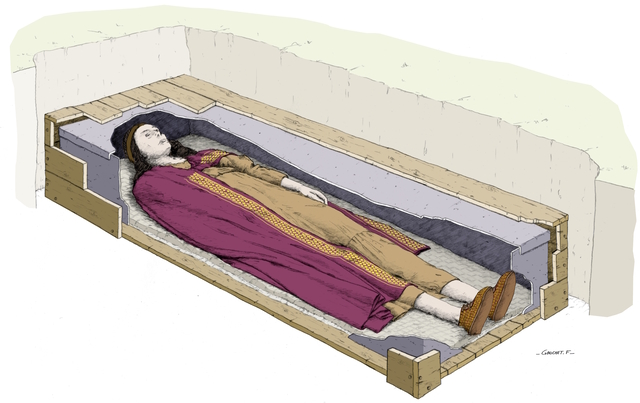
The site holds particular significance due to the historical importance of the first bishops of Autun, who were buried in these grounds. However, not all burials were Christian, and several belonged to individuals of higher social standing, as evidenced by the exceptional quality of the grave goods found with them. Among the most notable finds were a set of 4th-century amber pins, unique in their kind, and an extraordinary diatretic glass, one of only 10 such pieces known to exist in the world. These items stand as a testament to the wealth and prestige of the local elite and their active participation in the trade and material culture of the late Roman world.
Video
Watch Shroud of Turin: The Timeless Relic to explore the mystery and history behind this ancient and controversial artifact. A must-watch for those intrigued by history and religion!
The Textile Fragments and Their Preservation
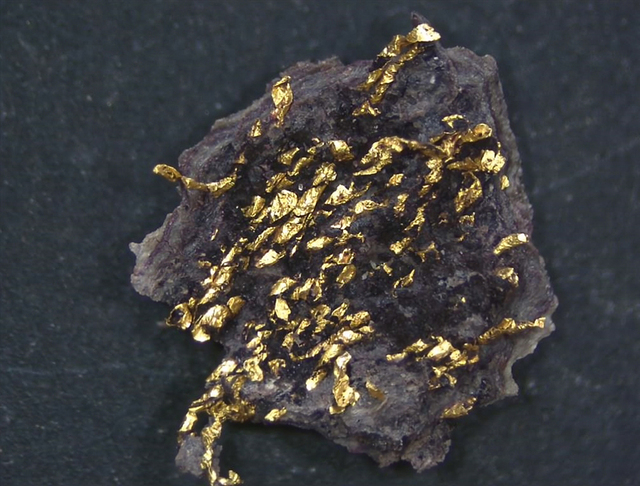
Among the significant finds within the tombs were fragments of textiles woven with gold threads. These fragile pieces were located in six of the tombs, five of which were lead coffin burials, with the sixth contained in a wooden coffin. The largest and most preserved textile remnants were found in Grave 47, which held the remains of a high-status individual. The bones had decomposed, but a textile woven with golden metal threads and purple fabric covered the length of the coffin, except for where the head had once rested.
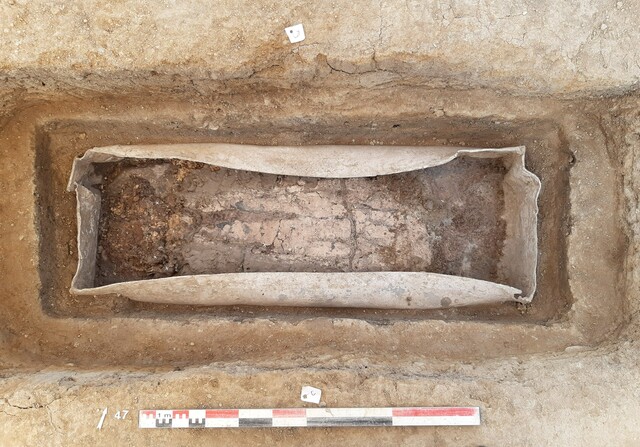
What followed was an extraordinary conservation effort to retrieve and restore these delicate textiles. The clods of earth containing the textile were carefully excavated in 10×10-inch sections and refrigerated to prevent mold from forming and the fibers from degrading. Using CT scanning technology, archaeologists mapped out the exact placement of the fabric within the soil before proceeding with its gradual drying. The painstaking extraction process, which spanned over a year, allowed for the retrieval of textile fragments, giving researchers a clearer understanding of what the fabric looked like and how it might have been used.
The Gold and Purple Shroud: A Glimpse into the Past
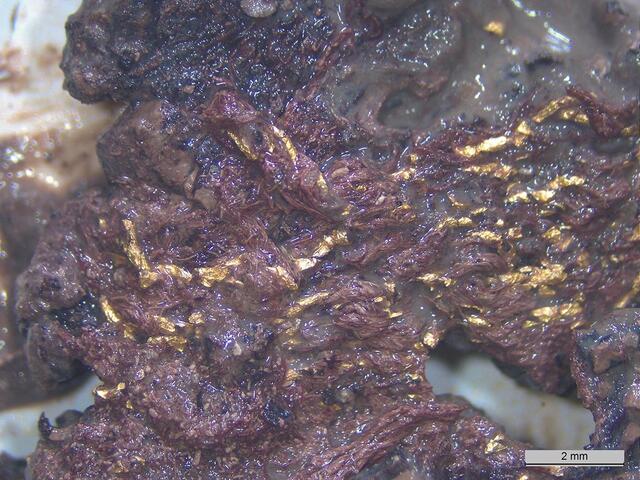
After two years of careful excavation, the textile has been reconstructed, revealing a stunning gold and purple fabric, likely to have been a tunic or a shroud, approximately 5×10 feet in size. The textile’s remarkable preservation offers invaluable insight into the quality and intricacy of craftsmanship from the 4th century.

The gold fabric was made by winding gold strips around a textile core. Despite the passage of centuries, the gold threads remain intact, although the organic material surrounding them has nearly disappeared due to the degradation caused by infiltrating moisture within the coffin. The textile’s fine gold threads, some of which measure 100 microns in diameter with strips about 300 microns wide, reflect the meticulous precision employed in its creation. This attention to detail and the use of luxury materials suggest the owner was a person of great wealth and status.
What sets this textile apart from other archaeological discoveries is its use of the tapestry technique, with curvilinear patterns incorporated into the gold thread fabric. These patterns likely represented floral or plant motifs, offering a glimpse into the design sensibilities of the period. The textile, along with other high-status items found in the tomb, illustrates the growing trend of elaborate burial practices among the elite of early Christian society.

The Restoration Process: Challenges and Triumphs
The restoration of the gold and purple shroud was no simple task. Over the course of several years, conservators had to contend with severe degradation of the material. The original plaster and soil had damaged the delicate textile, and the organic components had broken down entirely. The restoration team, led by experts in the field, worked tirelessly to consolidate the remaining fragments and create a new internal armature to support the structure.
The project involved the installation of metal support rods, carefully positioned to align with the original framework of the textile, all while ensuring that the historical integrity of the piece was maintained. Special attention was given to the cleaning and consolidation of the painted and plaster surfaces, ensuring that the gold thread remained intact, while also making repairs where gaps had formed. The team also focused on creating a technologically advanced base to support the shroud, protecting it from potential environmental stresses, such as seismic activity, ensuring that the piece remains preserved for future generations.
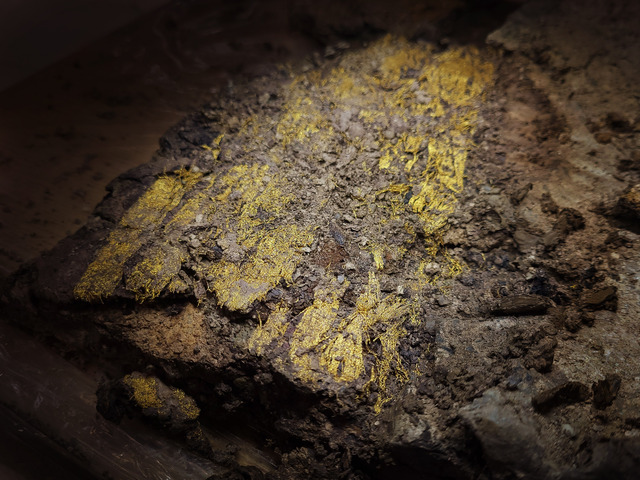
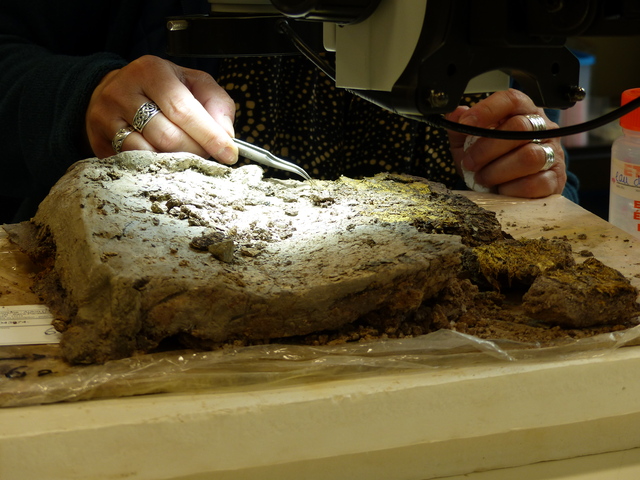
A Cultural Treasure: Displaying the Gold and Purple Shroud
The restoration culminated in a remarkable achievement: the display of the shroud at the Musée du Quai Branly in Paris. The exhibit, titled “By the Thread of Gold: The Art of Dressing from the Orient to the Rising Sun,” runs through July 2025 and is already generating excitement among historians, archaeologists, and art lovers alike. This exhibit allows the public to view the entire gold and purple shroud for the first time, showcasing its intricate details and the wealth of historical knowledge it offers.
The exhibit not only highlights the craftsmanship of the textile but also provides insights into early Christian culture, textile production, and the burial rituals of the 4th century. The rare combination of gold and purple threads, the tapestry technique, and the elaborate design reflect the status and artistic tastes of the period, making this find an exceptional example of early Christian luxury.
Conclusion: The Shroud’s Legacy in Archaeology
The discovery and restoration of the 4th-century gold and purple shroud is a significant milestone in archaeological research. It not only adds to our understanding of early Christian burial practices but also provides a tangible connection to the past, shedding light on the craftsmanship and cultural values of a bygone era. The meticulous work of archaeologists and conservators has preserved a piece of history that continues to captivate those who view it.
The shroud’s journey from excavation to display serves as a reminder of the dedication and care required to preserve our cultural heritage. It is a testament to the enduring legacy of ancient artisans and the vital role archaeology plays in unraveling the mysteries of our past. As more people come to appreciate the artistry and craftsmanship of the gold and purple shroud, it will undoubtedly continue to inspire awe and curiosity for years to come.
Video
Watch The Shroud of Turin: A 700-Year-Old Mystery Solved to uncover the fascinating science and history behind this iconic relic. A must-see for those curious about its origins!



